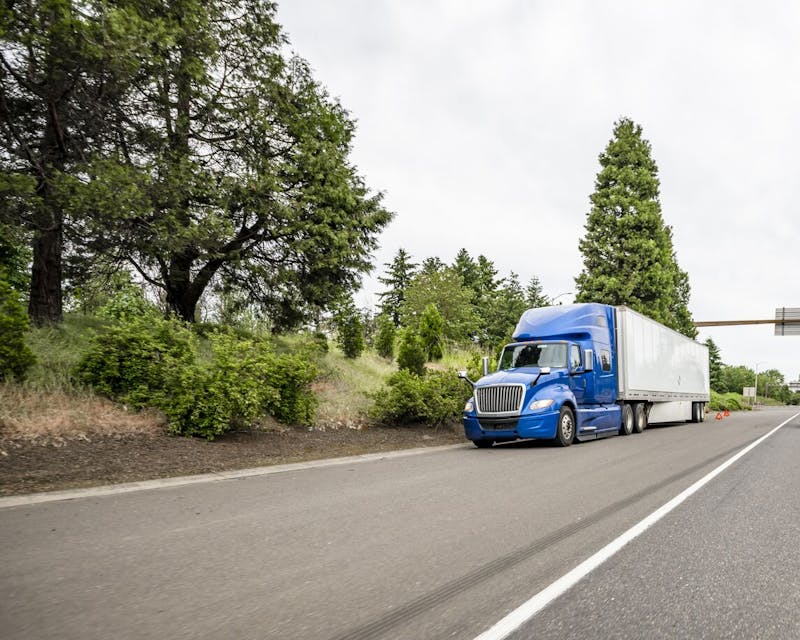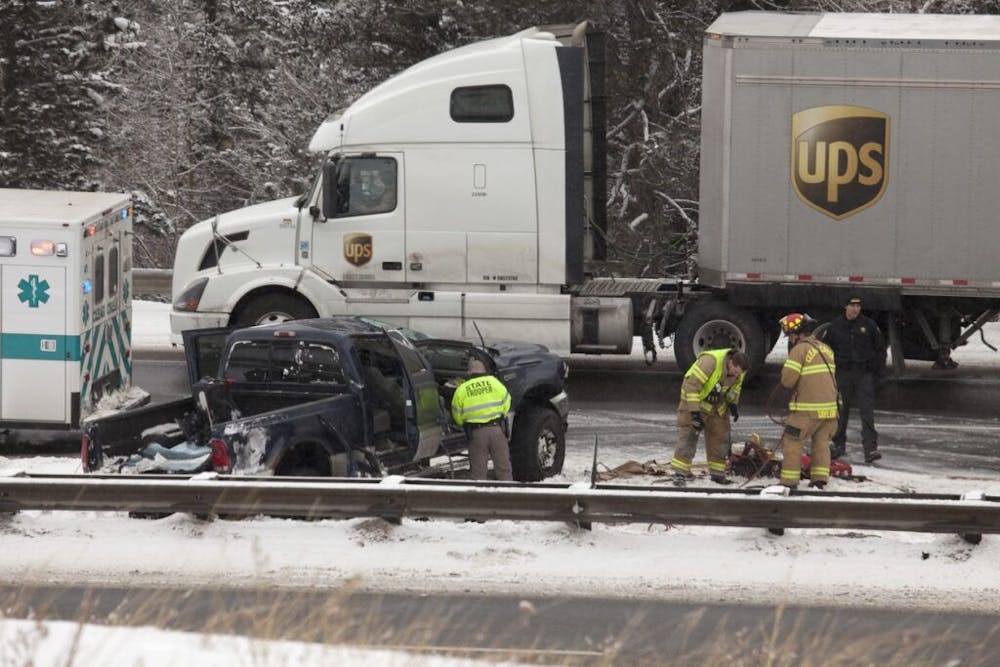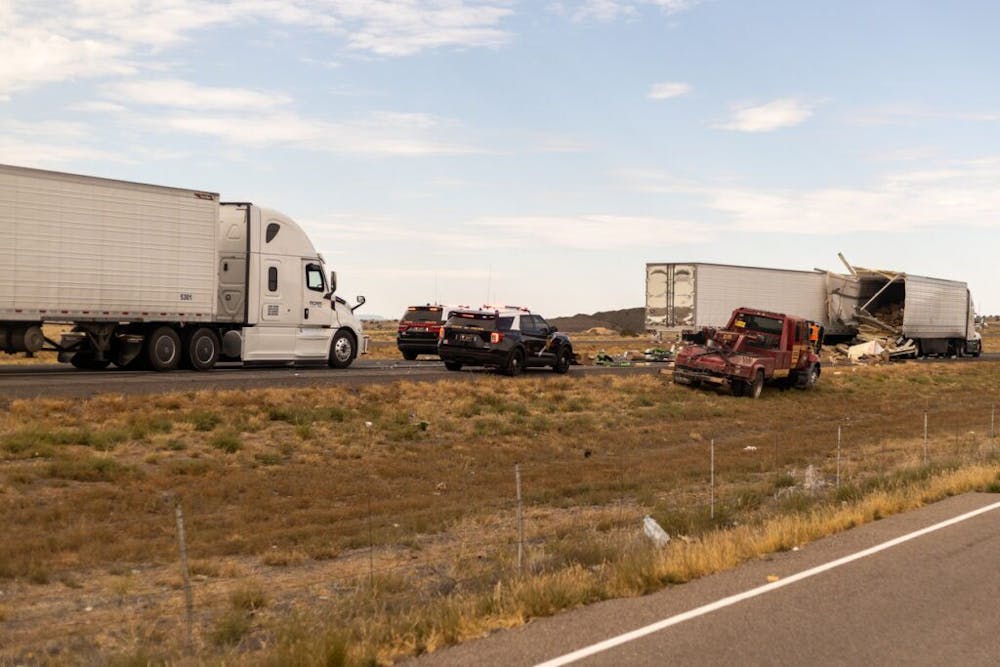Get a Free Consultation
2 minute response
24 hours a day, 7 Days a Week
Dedicated Trust Guss Intake Team

Being involved in a truck accident can be a traumatic experience, leaving you with numerous questions about legal responsibilities and compensation. Your road to recovery and justice starts with understanding who is liable, but liability often involves multiple parties, such as the truck driver, trucking company, or even the vehicle manufacturer.
With the assistance of knowledgeable legal professionals, you can ensure that every responsible party is held accountable. At Stewart J. Guss Injury Lawyers, you will find experienced attorneys experienced in truck accident cases who can help you navigate these intricate legal waters. You can Trust Guss to help you secure the compensation you need while promoting safer practices within the trucking industry.
The legal theory of liability is the framework used to determine who is legally responsible for harm or damages in various contexts, such as personal injury, property damage, or contract breaches. Critical components of liability include the following:
Duty of care refers to the legal obligation to exercise a level of care that a reasonably prudent person would in similar circumstances. In a car accident case, all drivers have a duty to obey traffic laws and drive safely to avoid harming others.
A breach of duty occurs when an individual or entity fails to meet the required standard of care. For example, if a driver runs a red light and causes an accident, they have breached their duty to follow traffic signals.
Causation links the breach of duty directly to the harm or damages suffered. It has two elements: actual cause and proximate cause. Also known as "cause-in-fact," this means the breach directly caused the injury or damage.
This involves whether the harm was a foreseeable result of the breach. If a speeding driver crashes into another car, causing injuries, the speeding is the actual cause. If it was foreseeable that speeding could lead to an accident, it is also the proximate cause.
Damages refer to the losses suffered by the injured party. These can be economic (medical bills, lost wages) or non-economic (pain and suffering). In a slip-and-fall case, damages might include medical expenses for treating injuries and compensation for any pain and suffering endured.

Truck drivers significantly impact accident outcomes. Factors such as errors, fatigue, and substance abuse can all contribute to the likelihood and severity of these incidents.
Driver error is a common factor in truck accidents. Mistakes can range from misjudging stopping distances to improper lane changes. Due to trucks' size and weight, even minor errors in judgment can have severe consequences. Common errors include the following:
Due to long hours behind the wheel, fatigue plays a significant role in truck accidents. Exhaustion reduces reaction times and decision-making abilities. Drivers often exceed the legally allowed hours of service, and fatigue-related accidents are more likely during night drives or after extended periods without rest.
Substance abuse is another critical factor that can impair a truck driver's capabilities. Whether it's alcohol or illegal drugs, the presence of these substances increases the likelihood of accidents. The impact of substance use includes the following:
Trucking companies must provide comprehensive training programs to their drivers. This includes:
Maintaining the fleet is another critical responsibility for trucking companies:
Understanding insurance considerations is crucial for determining compensation and liability when involved in a truck accident.
Policy limits dictate the maximum amount an insurance company will pay for a covered claim. Commercial trucking policies often have higher limits for truck accidents due to the potential for severe damages and injuries.
It's essential to know the limits of the policies involved. Multiple policies might be involved, including:
Remember, each policy has different limits and conditions. Additionally, the combined policy limits may be sufficient to cover all damages. In cases where the policy limits are exceeded, you may need to explore other legal avenues or parties for additional compensation.
First, the accident should be reported to the insurance companies of all parties involved. Collect and preserve evidence, including photographs, witness statements, and police reports. These will support your claim and help establish liability.
Next, you may undergo medical evaluations to document your injuries. Be thorough in reporting all symptoms and follow the prescribed treatment regimen. Insurance companies often use this medical information to assess the claim's validity.

Comparative negligence is a legal doctrine used to determine fault and allocate damages in accidents involving multiple parties, such as truck accidents. This concept recognizes that more than one party can be responsible for causing an accident and allows for the division of liability based on each party's degree of fault.
The theory comes into play when both the truck driver and the other party (e.g., a car driver) share some degree of responsibility for the accident. Instead of barring a party from recovering damages if they are partially at fault, comparative negligence allows the injured party to recover compensation proportionate to their level of fault.
There are two primary forms of comparative negligence:
The comparative negligence rule significantly impacts the compensation an injured party can receive. For example, if a car driver is awarded $200,000 in damages but is found to be 40% at fault, they would receive $120,000. If the same driver is found to be 60% at fault in a modified comparative negligence state with a 50% threshold, they will receive nothing.
The aftermath of a truck accident can be overwhelming, but Stewart J. Guss Injury Lawyers has built a strong reputation for guiding clients through these difficult times.
Our firm has extensive experience handling truck accident cases. This expertise allows us to navigate the complexities of each case effectively and secure the best possible outcome for you. You can trust our team to evaluate every detail critically, playing a significant role in building a strong case on your behalf.
Additionally, you’ll appreciate the accessibility and transparency offered by Stewart J. Guss Injury Lawyers. From the initial consultation to the final resolution, our attorneys maintain open lines of communication, keeping you informed and involved throughout the process. Your questions and concerns are handled promptly, ensuring you feel supported every step of the way.
If you or a loved one has been involved in a truck accident, don't hesitate to contact Stewart J. Guss Injury Lawyers. Book a complimentary case evaluation today and take the first step toward getting the help you deserve.
2 minute response
24 hours a day, 7 Days a Week
Dedicated Trust Guss Intake Team